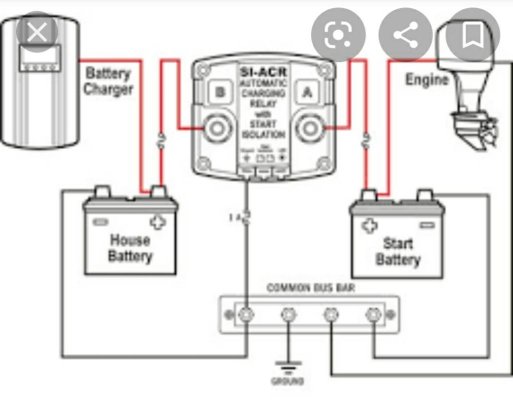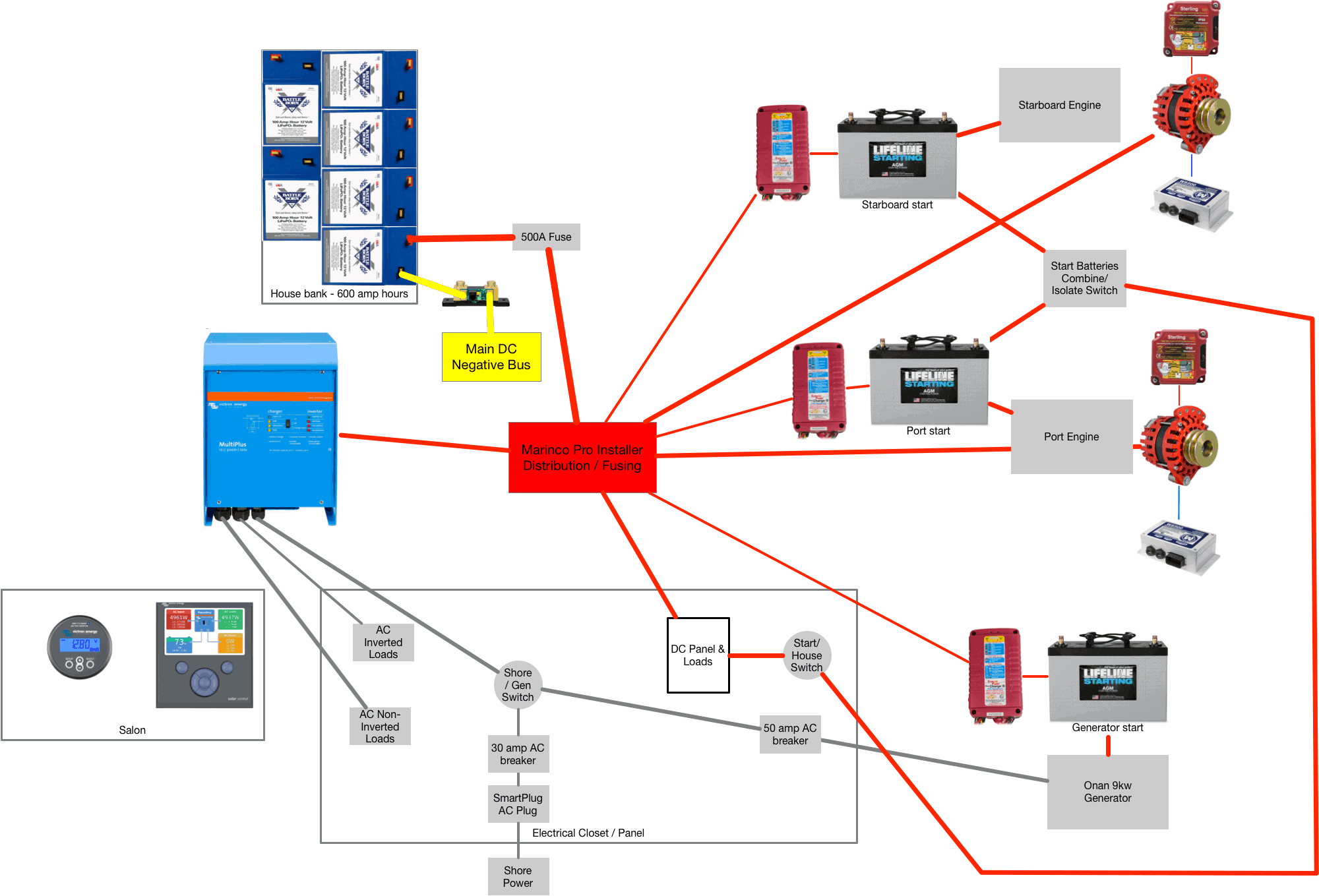Sure, it happens, multiple times, but still only a tiny percentage of users. In any case, it is not anything that can be prevented, a battery going bad, that is. When it does, the entire bank must be replaced. Okay, two charging sources and separate banks joined only when high inverter loads but won't you be worrying about a battery going bad on both banks at some time on each bank? Oh, I know, what are the chances of that happening? Multiple times?? There is one benefit in that, with eight batteries, for example, a bad battery will kill only four batteries but, again, this is a rare occurrence relative to the boating population. And, then there is the fact that your house bank is being only half-utilized when not joined. Folks, stop worrying about the esoteric and go boating. My opinion and I respect the opinions of all.
By the way, my house bank is eight batteries in two banks wired through an Off-Left-Right-All switch. I keep it on "all" full-time. When at anchor overnight, our use profile requires both banks else the batteries will be depleted beyond the point at which I am comfortable. If disaster strikes while at anchor, I can always start my engines with the generator batteries. I sleep well. Bottom line, FF, I can do what you do but I see a miniscule risk and choose not to do so.
A question, though if I may. You mentioned two charging sources. How would that work? A mutually exclusive charging source for each bank? Two generators that feed each bank separately? Or, wind and/solar?


